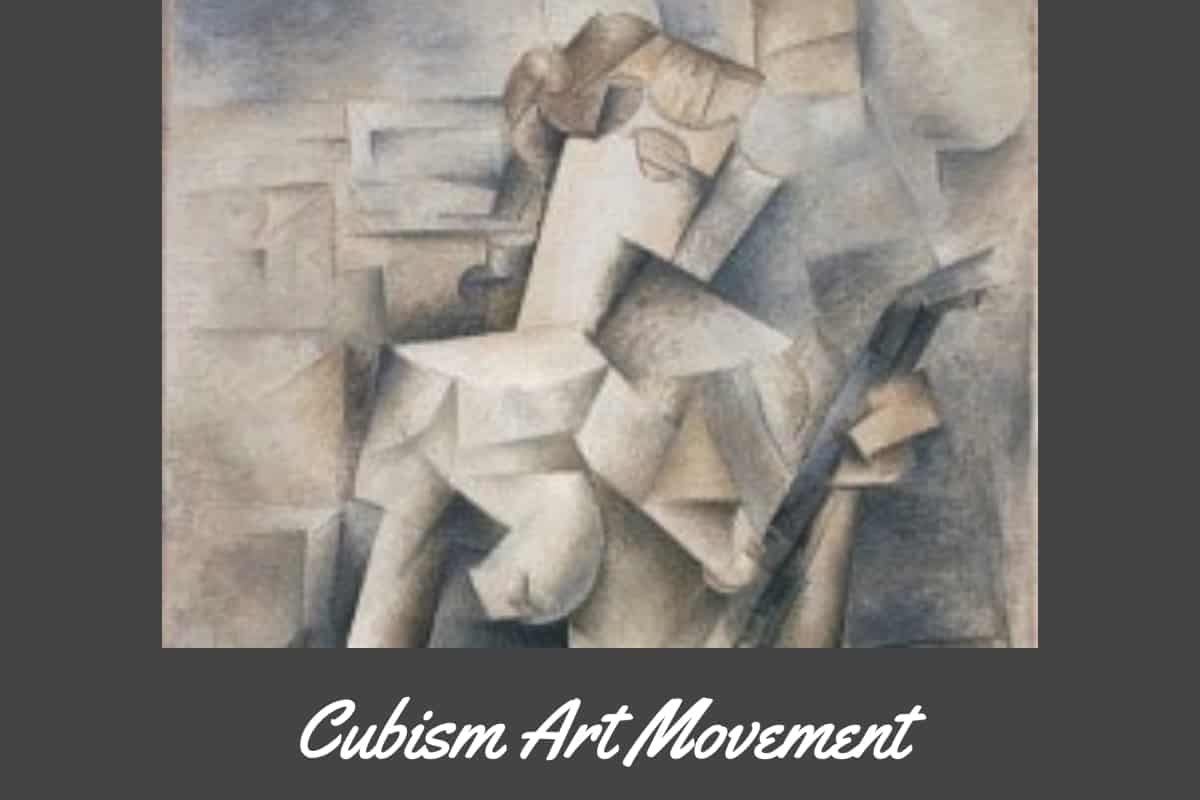Cubism was a truly revolutionary form of art that emerged in the early 20th century. It was shocking and extremely daring as the artists believed that Western art had run its course, so the artists were challenging the conventional forms of art. It was truly the start of the coming of the modern age of art.
Cubism is an early 20th-century avant-garde art movement that helped to revolutionize European painting and sculpture. It also helped to inspire related movements in music, literature, and architecture. There are two periods of Cubism called Analytical and Synthetic. Also, there is the Orphism Cubism, which is an offshoot of Cubism.
Table of Contents
- The Start of the Cubism Art Movement
- Definition of Cubism Art
- Analytical and Synthetic Cubism
- Off Shoots of Cubism Art – Orphism Cubism
- Frequently Asked Questions
- Frequently Asked Questions
- Related Questions
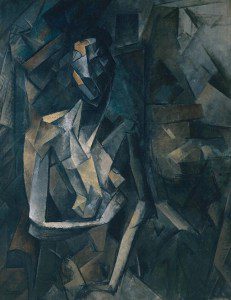
The Start of the Cubism Art Movement
Pablo Picasso and George Brague started the Cubism art movement and were later joined by Jean Metzinger, Albert Gleizes, Robert Delaunay, Henri Le Fauconnier, Juan Gris, and Fernand Leger. The movement was inspired by the three-dimensional form of some of the later works of Paul Cezanne.
Cubism, like many new art forms, started with the desire to break from the past and to change the meaning of art. If you had to pick one person who started the cubist movement and influenced it the most, it would be Pablo Picasso.
Definition of Cubism Art
The name of cubism came from the French art critic Louis Vauxcelles who once coined the term Cubism after he saw a landscape painting that George Braque painted in 1908. Louis Vauxcelle called the new art form Cubism.
In Cubism artwork, the objects are analyzed, broken up, and then reassembled in an abstract form. Instead of just depicting an object from a single viewpoint, it shows the art form or object from multiple points of view to show the object in a greater or fuller content.
The definition of Cubism is defined as:
“…a style of painting and sculpture developed in the early 20th century, characterized chiefly by an emphasis on formal structure, the reduction of natural forms to their geometrical equivalents, and the organization of the planes of a represented object independently of representational requirements.”
Dictionary.com
Cubism marked a significant turning point in the evolution of modern art. It is credited to having paved the way for pure abstract art and the modern art movement that continues to be influential art today.
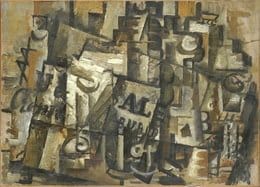
Here are some elements of Cubism Art:
- Rejected that art should copy nature – Cubism rejected the concept that the artist should copy nature or only show the traditional techniques or perspective of their world with their art and painting.
- Reduced objects to their fractured form – Cubism reduced and fractured the objects they were painting into geometric forms and then realigned them into a shallow and almost relief-like space.
- Uses multiple vantage points – The cubist artist would show the object from various or contrasting vantage points and not just one vantage point.
- Changes in how the world was seen through art – Through their art, the Cubists challenged and changed how we see the world and how the artists saw the world.
- Several different types of cubism art evolved – Several kinds of cubism art also evolved as analytical cubism, synthetic cubism, and orphic cubism,
Analytical and Synthetic Cubism
There are two major periods of this cubism, which are defined as analytical and synthetic cubism. Each of them is similar but also has some unique differences.
Analytical Cubism
The analytical cubism art movement developed is from 1910 to 1912. During this period, Picasso and Brague painted similar paintings and styles that are almost indistinguishable.
Here is some information on the analytical cubism:
- Breaking down the form – Both artists show the breaking down or analysis of the form they are painting.
- Angle and straight lines – Both of the artists favor using the right angle and a straight-line construction.
- Sculptural effect – Many of their paintings almost appear like sculptures in nature.
- Monochromatic color scale – They simplified their color schemes and used a monochromatic color scale, favoring colors like color hues of tans, brown, gray, cream, green, or blue.
- The form was most important – They used these monochromatic colors as they did not want to distract from their primary objective, which was the structure of the form they were painting.
- Multiple views of the object – They would use the monochromatic scale to show more complex and multiple views of the painting’s object. The objects also had a dimensional feel and looked like they were coming out of the canvas.
- Size of forms on the canvas – Normally, the forms they were painting would be more dense and compact at the center of the canvas and then grow larger and defuse out as it moved towards the canvas’s edges.
- Use of Motifs – They frequently used motifs like letters, musical instruments, bottles, pitchers, glasses, newspapers, the human face, and human body form.
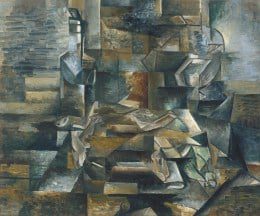
Synthetic Cubism
Synthetic cubism is the period after 1912 and after. It builds upon the analytical cubism movement but has some specific differences.
Here is some information on the synthetic phase of cubism:
- Emphasis combination or synthesis – In Synthetic Cubism, the artworks emphasize the combination of forms in the picture.
- Color – Color now assumes a stronger role in the paintings. They are not all monochromatic.
- Shapes – The shapes remain fragmented and flat and larger and more decorative than the analytical phase.
- Contrasting surfaces – The contrasting surfaces may be smooth and rough surfaces that contrast with one another.
- Collages Used – There can also be a placement of foreign materials such as parts of newspapers or tobacco wrappers pasted on the canvas in combination with the painted areas in the technique or a kind of collage. This would help them to emphasize the differences in textures further and, at the same time, force the viewer to ask, “what is real and what is an illusion?”
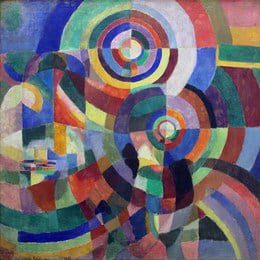
Off Shoots of Cubism Art – Orphism Cubism
Orphism Cubism Art was broken off of cubism, but Orphism cubism embraced bright colors with a difference. The Orphism Cubism arranged and painted color harmonies after a kind of musical scales or chorred models. The name Orphism was coined after the Greek god Orpheus who was known for his musical talents.
Orphism Cubism had an emphasis on colors. Whereas Pablo Picasso and George Braque had a monochromatic scale to their paintings, Orphism Cubism art used vibrant and vivid colors. Some important artists of Orphism Cubism art are Robert Delaunay, Sonia Delaunay, Vladimir Baranoff-Rossine, Frantisek Kupka, and Franz Marc,
Cubism art was a movement that has influenced a lot of the art that we see today. It was a change from what the impressionist was doing, and it led the way for many other kinds of art, such as abstract and modern art.
The cubism art movement also influenced sculpture, architecture, music, and literature of its day. That is why it is considered one of the most important artistic developments of the 20th Century.
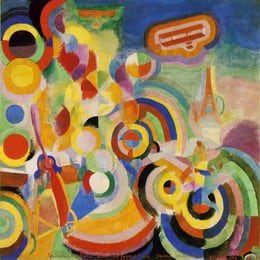
Frequently Asked Questions
What is Cubism, and how did it revolutionize European painting and sculpture in the early 20th century?
Cubism was an avant-garde art movement that emerged in the early 20th century, challenging traditional artistic forms. It revolutionized European painting and sculpture by breaking down objects and scenes into geometric shapes, providing a new perspective on representation.
Can you explain the two periods of Cubism, Analytical and Synthetic, and how they differ in artistic approach?
Cubism has two distinct periods: Analytical Cubism, characterized by fragmented and abstracted forms, and Synthetic Cubism, which reintroduced elements of representation using collages and mixed media. Analytical focuses on breaking down, while Synthetic focuses on building up.
What inspired the Cubist artists to challenge conventional forms of art in the early 20th century?
Cubist artists believed that Western art had reached its limits, and they sought to push boundaries and explore new ways of representing reality. They were driven by a desire to break free from traditional artistic norms and usher in a new era of modern art.
How did Cubism influence other artistic disciplines such as music, literature, and architecture?
Cubism extended its influence beyond visual arts, inspiring developments in music, literature, and architecture. Its emphasis on abstraction and fragmented forms prompted interdisciplinary experimentation and paved the way for a broader avant-garde movement.
What distinguishes Orphism Cubism from the main Cubist movement, and how did it contribute to the evolution of art?
Orphism Cubism is an offshoot of Cubism characterized by vibrant colors and a focus on lyrical abstraction. It emphasized the emotional and spiritual aspects of art. This sub-movement played a crucial role in diversifying the stylistic approaches within the broader Cubist framework.
How did Cubist artists approach the representation of objects and scenes in their works?
Cubist artists represented objects and scenes by breaking them down into geometric shapes and presenting multiple perspectives simultaneously. This approach, known as “multiple viewpoints” or “faceting,” aimed to capture the essence of the subject from various angles.
Who were some of the key figures in the Cubist movement, and what were their contributions to the development of Cubist art?
Pablo Picasso and Georges Braque are considered the pioneers of Cubism. Picasso’s groundbreaking work “Les Demoiselles d’Avignon” and Braque’s development of Analytical Cubism were instrumental in shaping the movement. Other notable figures include Juan Gris and Fernand Léger.
How did Cubism impact the traditional notions of perspective and representation in art?
Cubism shattered traditional perspectives by abandoning realistic representation in favor of fragmented and abstracted forms. The movement challenged the viewer to engage with art in a more dynamic and intellectual way, moving beyond the confines of traditional pictorial space.
What role did collage and mixed media play in the development of Synthetic Cubism?
Synthetic Cubism, a later phase of the movement, reintroduced elements of representation through the use of collage and mixed media. Artists incorporated everyday objects and materials into their works, blurring the line between art and reality and expanding the possibilities of artistic expression.
How did the Cubist movement contribute to the broader narrative of the modern age of art in the early 20th century?
Cubism marked the beginning of the modern age of art by challenging established norms and fostering a spirit of experimentation. Its influence extended beyond its immediate practitioners, shaping the trajectory of 20th-century art and laying the groundwork for subsequent avant-garde movements.
Anita Louise Art is dedicated to art education, great artists, and inspiring others to find and create their art. We love art that uplifts and inspires. #ArtToMakeYouSmile! #ArtToMakeYouHappy!
If you are interested in seeing any of my art, you can find out more by clicking here. If you are interested in what inspires me and my paintings, you can discover more by clicking here.
We have a free newsletter and would love you to be part of our community; you can subscribe to the newsletter by clicking here. If you have any questions, I would be happy to talk to you. You can reach me, Anita, by clicking here.
Subscribe to our Anita Louise Art YouTube Channel filled with great videos and information by clicking here.
Join us for our podcast “5 Minutes With Art.” Spend just 5 minutes a week with us to discover and learn about great art and artists. You can find out more about our podcast by clicking here.
Frequently Asked Questions
What made Pablo Picasso unique?
Pablo Picasso is considered to be one of the most influential artists of the 20th Century. He literally changed the direction and course of art. He became one of the most talked-about artists of the 20th Century. He drew, painted, and made sculptures in a way that had never been seen before. He started the Cubist art movement.
Who invented collage?
Collage was invented to be used in art by Pablo Picasso and George Braque when they started to use collage in their paintings. This, of course, would have been something extremely unique for this time period but has now become an important element in a lot of modern art.
Who was Pablo Picasso?
Pablo Picasso was a Spanish painter, sculptor, printmaker, ceramicist, and stage designer. He is widely regarded as one of the most influential artists of the 20th century and is known for co-founding the Cubist movement, the invention of constructed sculpture, and the co-invention of collage.
What is Pablo Picasso famous for?
Picasso is best known for his contributions to modern art, particularly his role in developing Cubism. His most famous works include “Les Demoiselles d’Avignon” (1907) and “Guernica” (1937), the latter being a powerful political statement on the horrors of war.
When and where was Picasso born?
Picasso was born on October 25, 1881, in Málaga, Spain.
Did Picasso have any notable styles or periods in his art career?
Yes, Picasso’s work is often categorized into several periods, including the Blue Period (1901-1904), Rose Period (1904-1906), African-influenced Period (1907-1909), Analytic Cubism (1909-1912), and Synthetic Cubism (1912-1919).
What was Picasso’s “Blue Period”?
The Blue Period is a term used to define the works produced by Picasso between 1901 and 1904. This period is characterized by the use of monochromatic shades of blue and blue-green, often depicting somber themes and impoverished subjects.
How did Picasso influence modern art?
Picasso’s innovative approaches to painting, particularly his development of Cubism, significantly influenced the direction of modern art. His techniques and ideas challenged traditional notions of form and perspective, inspiring a multitude of movements in modern and contemporary art.
When did Pablo Picasso die, and what was his legacy?
Pablo Picasso passed away on April 8, 1973, in Mougins, France. His legacy is vast, encompassing groundbreaking artistic techniques and a massive body of work that continues to influence and inspire artists around the world.
Related Questions
Where Can I See Some Frank Lloyd Wright Houses?
Nestled away on West Burnham Street in Milwaukee. Wisconsin is a hidden jewel of Frank Lloyd Wright’s architecture. One block of West Burnham Street has some duplexes, and houses were all designed by Frank Lloyd Wright, specifically for the time’s working classes. Today, all those structures on West Burnham Street in Milwaukee still testify to this great architect.
You can read more by checking out the blog Frank Lloyd Wright’s American System-Built West Burnham Street Homes by clicking here.
Who is the Artist Carl Heinrich Bloch?
One of Denmark’s greatest artists, Carl Bloch, almost did not become an artist. His parents wanted him to join the Navy, but he was obsessed with art and became artistically gifted early in life. Throughout his life, he painted many vital paintings. One of his most crucial art commissions was to paint 23 scenes from the life of Christ at the Frederiksberg Castle in Denmark. Later in life, he became a very skilled printmaker. Carl Bloch was married and had eight children. Both Carl and his wife Alma died relatively young.
You can read more about Carl Bloch by reading our blog entitled 18 Facts About The Artist Carl Heinrich Bloch (1834 – 1890) by clicking here.
What Are The Characteristics Of The Arts And Crafts Movement?
The Arts and Crafts movement started in Britain and swept over Europe and the United States. The movement started to become both famous and very influential in the late 19th century and changed how many artists worldwide viewed their art. It also changed how artists saw the design of their artwork, buildings, fabrics, wallpaper, parks, cities, and objects in their homes and offices.
You can learn more by reading What Are The Characteristics Of The Arts And Crafts Movement? by clicking here.

